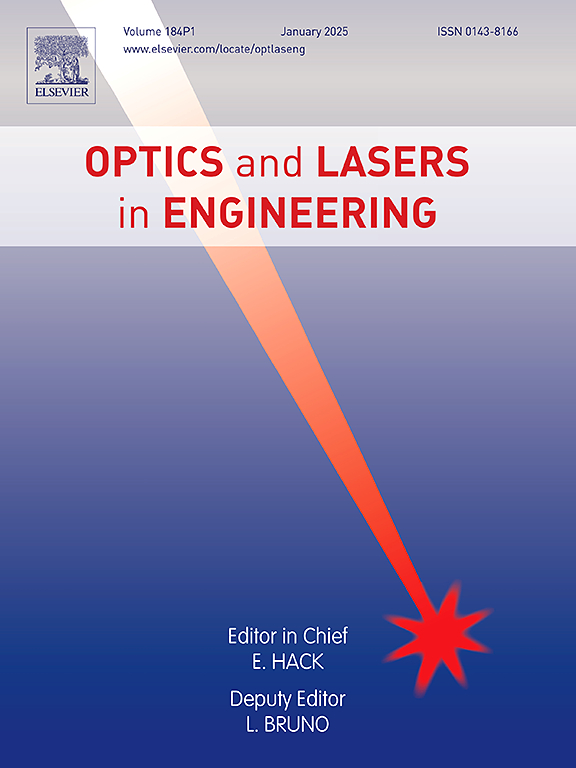基于随机球测试的球面菲佐干涉仪对准误差新分析和球面度校准系统不确定性评估
IF 3.5
2区 工程技术
Q2 OPTICS
引用次数: 0
摘要
日本国家计量研究院(NMIJ)利用菲佐干涉仪开发了一套高精度球面度校准系统,并对该系统的测量不确定性进行了全面评估。一般来说,利用球面菲佐干涉仪测量结果的不确定性主要有两个来源。首先,系统的精度受到参考球表面绝对轮廓的先验知识的重大影响。为了解决这个问题,研究使用随机球测试方法为参考球表面建立了一个简单而有效的校准系统。其次,系统的精度会受到错位像差的影响,当测试球相对于参考球从共焦位置发生横向或纵向位移时,就会产生错位像差。这种不对准会带来高阶形状误差(不对准像差)和低阶形状误差(对准误差)。本研究通过对照相机平面上的观测坐标系的分析考虑,深入研究了不对准像差,并提出,由于不对准可能会暴露出潜在的缺陷,因此应通过实验确定不对准对每个参考球单位的影响。此外,研究还提出,通过对偏差进行深入的不确定性分析,从理论上证实与偏差相关的不确定性要小于以往的研究,重点是相机平面上的观测坐标系。值得注意的是,这项研究表明,测量不确定性水平 λ/100 是可以实现的,与之前报告的研究相比,对偏差的容差更大。基准球单元绝对轮廓的校准不确定度为 4.2 nm,样品测量的不确定度确定为 4.6 nm,偏差容限为 ±λ/10。这一进步标志着在提高球度测量的准确性和可靠性方面迈出了一大步,有望在精密工程和计量领域得到广泛应用。本文章由计算机程序翻译,如有差异,请以英文原文为准。
Novel analysis of alignment error on spherical Fizeau interferometer and uncertainty evaluation of sphericity calibration system based on random ball test
The National Metrology Institute of Japan (NMIJ) has developed a high-precision sphericity calibration system utilizing a Fizeau interferometer and conducted a thorough evaluation of the system's measurement uncertainty. Generally, there are two principal sources of uncertainty in the measurement outcomes when utilizing a spherical Fizeau interferometer. First, the accuracy of the system is significantly influenced by the prior knowledge of the reference sphere surface's absolute profile. To address this, the study established a straightforward yet effective calibration system for the reference sphere surface using a random ball test method. Second, the system's precision is affected by misalignment aberration, which occurs when there is any lateral or longitudinal displacement of the test sphere from the confocal position relative to the reference sphere. This misalignment can introduce both high-order shape errors (misalignment aberrations) and low-order shape errors (alignment errors). Through analytical consideration of an observation coordinate system on the camera plane, this study delves into misalignment aberrations, suggesting that the impact of misalignment should be determined experimentally for each reference sphere unit due to potential imperfections that may be revealed by misalignment. Furthermore, the study proposes that uncertainties related to misalignment aberrations are theoretically confirmed to be smaller than previous studies by conducting an in-depth uncertainty analysis of the misalignment, with a focus on the observation coordinate system on the camera plane. Notably, the research demonstrates that a measurement uncertainty level of λ/100 is achievable, maintaining a broader tolerance for misalignment than previously reported studies. The uncertainty of calibration of the reference sphere unit's absolute profile was 4.2 nm and the uncertainty of sample measurement was determined to be 4.6 nm with misalignment tolerance of . This advancement marks a stride toward improving the accuracy and reliability of sphericity measurements, offering potential for widespread application in precision engineering and metrology.
求助全文
通过发布文献求助,成功后即可免费获取论文全文。
去求助
来源期刊

Optics and Lasers in Engineering
工程技术-光学
CiteScore
8.90
自引率
8.70%
发文量
384
审稿时长
42 days
期刊介绍:
Optics and Lasers in Engineering aims at providing an international forum for the interchange of information on the development of optical techniques and laser technology in engineering. Emphasis is placed on contributions targeted at the practical use of methods and devices, the development and enhancement of solutions and new theoretical concepts for experimental methods.
Optics and Lasers in Engineering reflects the main areas in which optical methods are being used and developed for an engineering environment. Manuscripts should offer clear evidence of novelty and significance. Papers focusing on parameter optimization or computational issues are not suitable. Similarly, papers focussed on an application rather than the optical method fall outside the journal''s scope. The scope of the journal is defined to include the following:
-Optical Metrology-
Optical Methods for 3D visualization and virtual engineering-
Optical Techniques for Microsystems-
Imaging, Microscopy and Adaptive Optics-
Computational Imaging-
Laser methods in manufacturing-
Integrated optical and photonic sensors-
Optics and Photonics in Life Science-
Hyperspectral and spectroscopic methods-
Infrared and Terahertz techniques
 求助内容:
求助内容: 应助结果提醒方式:
应助结果提醒方式:


